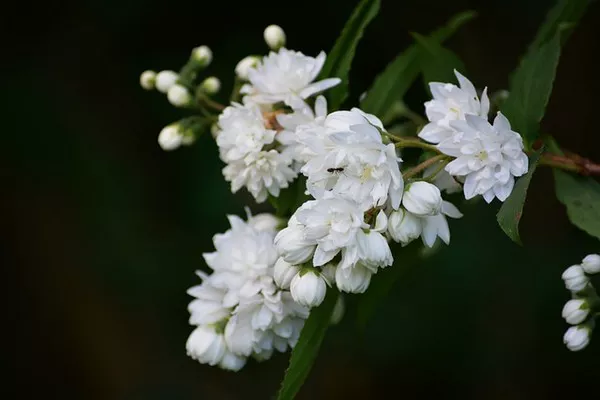Gardening enthusiasts often face the challenge of selecting the right plants for their outdoor spaces, particularly when dealing with shaded areas. While many plants prefer abundant sunlight, there is a diverse range of flowers that not only tolerate but thrive in shaded environments. Shade gardening offers a unique opportunity to create a tranquil and picturesque garden without the need for constant exposure to the sun’s rays. In this article, we will explore the fascinating world of shade-loving flowers, their characteristics, and how to cultivate a thriving shade garden.
Understanding Shade
Before diving into the world of shade-loving flowers, it’s essential to understand the different types of shade. Shade can be broadly categorized into two types: full shade and partial shade.
Full Shade: Full shade refers to areas that receive no direct sunlight throughout the day. These areas are typically found under dense tree canopies, near tall buildings, or on the north side of structures. Full shade conditions can be challenging for many plants because of the lack of direct light.
Partial Shade: Partial shade, also known as dappled shade, receives some sunlight during the day but is protected from the intense midday sun. This type of shade can be found under trees with scattered leaves, near lattices, or in areas with filtered sunlight. Partial shade conditions offer more opportunities for gardening as they provide a balance between light and shade.
Now that we have a clear understanding of the different types of shade, let’s explore some beautiful flowers that thrive in these conditions.
Flowers for Full Shade
Hostas (Hosta spp.): Hostas are renowned for their striking foliage and are well-suited for full shade. They come in various sizes and colors, making them a versatile choice for shade gardens. Hostas produce elegant spikes of white or lavender flowers in the summer, adding a touch of grace to shady spots.
Bleeding Heart (Dicentra spectabilis): Known for their unique heart-shaped flowers, bleeding hearts are a classic choice for full shade gardens. These perennials bloom in spring and early summer, creating a charming and romantic atmosphere.
Lungwort (Pulmonaria spp.): Lungworts are low-maintenance shade-loving plants with distinctive silver-spotted leaves. They produce clusters of tubular flowers in shades of pink, blue, or white, making them an attractive addition to any shade garden.
Astilbe (Astilbe spp.): Astilbes are beloved for their feathery plumes of flowers that rise above lush, fern-like foliage. These perennials come in various colors and thrive in moist, full shade conditions.
Japanese Forest Grass (Hakonechloa macra): This ornamental grass is a graceful choice for full shade. Its cascading, arching foliage adds texture and movement to shade gardens, creating a serene and tranquil atmosphere.
Flowers for Partial Shade
Impatiens (Impatiens spp.): Impatiens are renowned for their vibrant, colorful flowers that light up partially shaded areas. They come in a wide range of shades, from delicate pastels to bold, eye-catching hues.
Columbine (Aquilegia spp.): Columbines are known for their unique, spurred flowers that resemble a cluster of elegant bells. They thrive in partial shade and come in various colors, attracting hummingbirds and pollinators to your garden.
Foxglove (Digitalis purpurea): Foxgloves are tall, stately plants with tubular flowers that bloom along tall spikes. They prefer partial shade and add vertical interest to your garden.
Hellebore (Helleborus spp.): Also known as Lenten roses, hellebores are early bloomers that bring color to your garden in late winter or early spring. They are shade-tolerant and come in a range of hues, from deep purples to soft pinks.
Brunnera (Brunnera macrophylla): Brunnera, also called Siberian Bugloss, boasts heart-shaped leaves and small, forget-me-not-like flowers. They are an excellent choice for partial shade and bring a touch of blue to your garden.
Caring for Shade-Loving Flowers
Once you’ve selected the right shade-loving flowers for your garden, it’s important to provide them with the care they need to thrive. Here are some essential tips for maintaining a flourishing shade garden:
Soil Preparation: Ensure your soil is well-draining and rich in organic matter. Amending the soil with compost or organic mulch will improve moisture retention and nutrient content.
Watering: Most shade-loving plants prefer consistently moist soil. Water your plants regularly to keep the soil evenly moist, especially during dry spells.
Mulching: Apply a layer of mulch to conserve soil moisture and suppress weeds. Mulch also helps maintain a more stable soil temperature in shaded areas.
Fertilization: Use a balanced, slow-release fertilizer to provide essential nutrients to your plants. Follow recommended feeding schedules for the specific flowers you’ve chosen.
Pruning and Deadheading: Regularly remove spent flowers and dead or yellowing leaves to encourage new growth and maintain a tidy appearance.
Pest and Disease Management: Keep an eye out for common shade garden pests like slugs and snails. Implement appropriate control measures to protect your plants.
Light Management: Prune nearby trees or shrubs strategically to allow filtered sunlight to reach your shade-loving plants. Be cautious not to overexpose them to direct sun, as this can damage their delicate leaves.
Conclusion
Creating a shade garden can be a rewarding endeavor, as it allows you to explore a different dimension of gardening, filled with unique and captivating plants. By selecting the right shade-loving flowers and providing them with the care they need, you can transform even the darkest corners of your garden into vibrant, colorful, and tranquil retreats. Whether you have full shade or partial shade conditions, there is a wide array of flowers to choose from, each contributing its own beauty to your shaded oasis. So, embrace the art of shade gardening and let your creativity flourish in the shadows.


